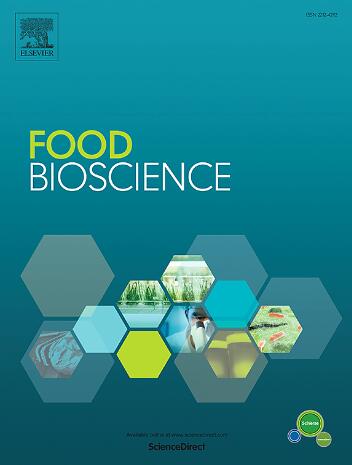解码通道鲶鱼(Ictalurus punctatus)的风味前体:脂质组学指导下热处理下磷脂酰胆碱氧化途径的发现
IF 5.9
1区 农林科学
Q1 FOOD SCIENCE & TECHNOLOGY
引用次数: 0
摘要
本原创研究将脂质组学和HS-SPME-GC-MS结合起来,揭示了蒸(ST)和烤(RO)加工过程中通道鲶鱼的脂质-风味相互作用。利用脂质组学技术鉴定了1085种脂质,发现磷脂酰胆碱(PC)是一种关键的风味前体,经后处理后显著下调(Log2FC:−0.71 ~−1.40)。脂质组学显示热驱动极化,中链脂肪酸(C8-C10)减少,长链脂肪酸(C16-C22)增加。相关分析强调了PC与醛类(己醛、壬醛)的强烈关联,化学模拟证实了PC (C18:2/C16:0)氧化产生了己醛、辛醛、丙酮等关键风味化合物,与正宗渠道鲶鱼肉中的关键挥发性有机化合物高度一致。确定了双重降解途径:(1)甘油主链裂解生成丙酮;(2)自由基介导的β-裂解亚油酸自氧化生成己醛和反式-2-庚烯醛。由于较高的热应力,反渗透酶增强了醛的形成。值得注意的是,1-辛烯-3-醇在PC氧化产物中不存在,这表明有其他的酶或非脂质途径。这项工作确定了PC作为关键的风味前体,并绘制了其氧化路线,为热加工渔业食品中脂质驱动的风味化学提供了新的见解。本文章由计算机程序翻译,如有差异,请以英文原文为准。

Decoding flavor precursors in channel catfish (Ictalurus punctatus): Lipidomics-guided discovery of phosphatidylcholine oxidation pathways under thermal processing
This original research integrated lipidomics and HS-SPME-GC-MS to unravel lipid-flavor interplay in channel catfish under steaming (ST) and roasting (RO) processing. 1085 kinds of lipids were identified using lipidomics, and phosphatidylcholine (PC) emerged as a critical flavor precursor, showing significant downregulation (Log2FC: −0.71 to −1.40) post-processing. Lipidomics revealed thermal-driven polarization, during which medium-chain fatty acids (C8–C10) declined, while long-chain species (C16–C22) increased. Correlation analysis highlighted PC's strong association with aldehydes (hexanal, nonanal), confirmed by chemical simulations where PC (C18:2/C16:0) oxidation generated key flavor compounds like hexanal, octanal, acetone, which were highly consistent with key VOCs from authentic channel catfish flesh. Dual degradation pathways were identified: (1) glycerol backbone cleavage yielding acetone and (2) linoleic acid autoxidation via radical-mediated β-scission, producing hexanal and trans-2-heptenal. RO intensified aldehyde formation due to higher thermal stress. Notably, 1-octen-3-ol was absent in PC oxidation products, suggesting alternative enzymatic or non-lipid pathways. This work established PC as a pivotal flavor precursor and mapped its oxidation routes, offering novel insights into lipid-driven flavor chemistry in thermally processed fishery foods.
求助全文
通过发布文献求助,成功后即可免费获取论文全文。
去求助
来源期刊

Food Bioscience
Biochemistry, Genetics and Molecular Biology-Biochemistry
CiteScore
6.40
自引率
5.80%
发文量
671
审稿时长
27 days
期刊介绍:
Food Bioscience is a peer-reviewed journal that aims to provide a forum for recent developments in the field of bio-related food research. The journal focuses on both fundamental and applied research worldwide, with special attention to ethnic and cultural aspects of food bioresearch.
 求助内容:
求助内容: 应助结果提醒方式:
应助结果提醒方式:


